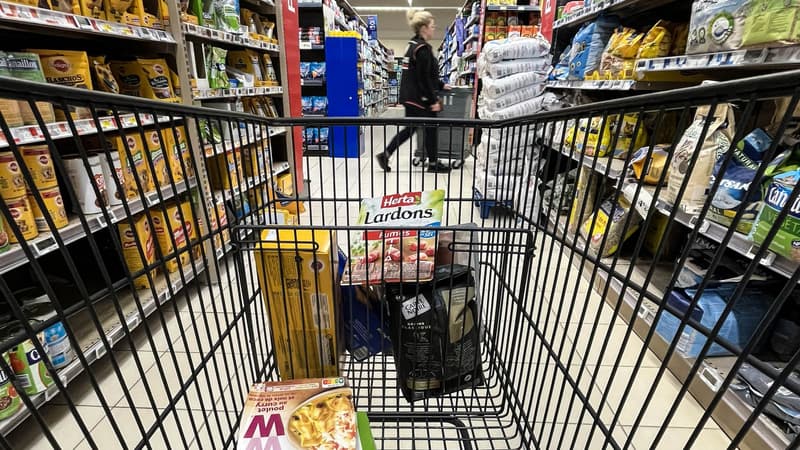The decline continues slowly but surely. In October, annual inflation across all major distribution channels measured by Circana stood at 9.2%. This is the eighth consecutive month of decline after the peak of 16.2% recorded in March by the institute.
You have to go back 13 months, to September 2022, to find a rate below 10% in one year. Regarding the monthly evolution, prices have no longer increased globally in our supermarkets since last June. Stable in August, they recorded a drop of 0.6% in September and 0.5% in October.
However, Circana points out, prices remain at a high level (21.3% more than two years ago) and the falls in recent months represent only a few cents here and there for most products.
the cans are burning
In one month, diapers recorded the biggest drops with average prices of -4%. Ahead of fabric softeners (-3.2%), champagne (-3%), dishwasher products (-2.6%) and frozen starters (-2.5%). In one year, however, deflationary categories are almost non-existent: only toothpaste has fallen (-0.5%).
On the contrary, some products continue to show an upward trend, mainly preserved vegetables. In the strongest increases measured in October we find corn (+3.7%), flagella (+3.3%), peas, carrots (+2.2%) and even green beans (+1. 9%).
Increases that are explained, in particular, by last year’s poor harvests due to drought, as well as by the increase in the prices of some metals in recent months. For their part, sweet products are not expected to decrease in the short term due to the continued increase in world prices for cocoa and sugar in particular.
Finally, it should be noted that the prices of all brand categories evolved together during the same period (+9.2% for brands and +9.3% for private labels), while it was the distributors’ products that that increased the most in 18 months. This undoubtedly reflects a more assertive desire on the part of retailers than brands to lower on-shelf prices.
Hence the Government’s willingness to accelerate the negotiation process by advancing the date of the legal discussion period between distributors and brands, which should end in January instead of the usual month of March. Until then, price reductions on major brand products should not be dramatic.
Source: BFM TV


